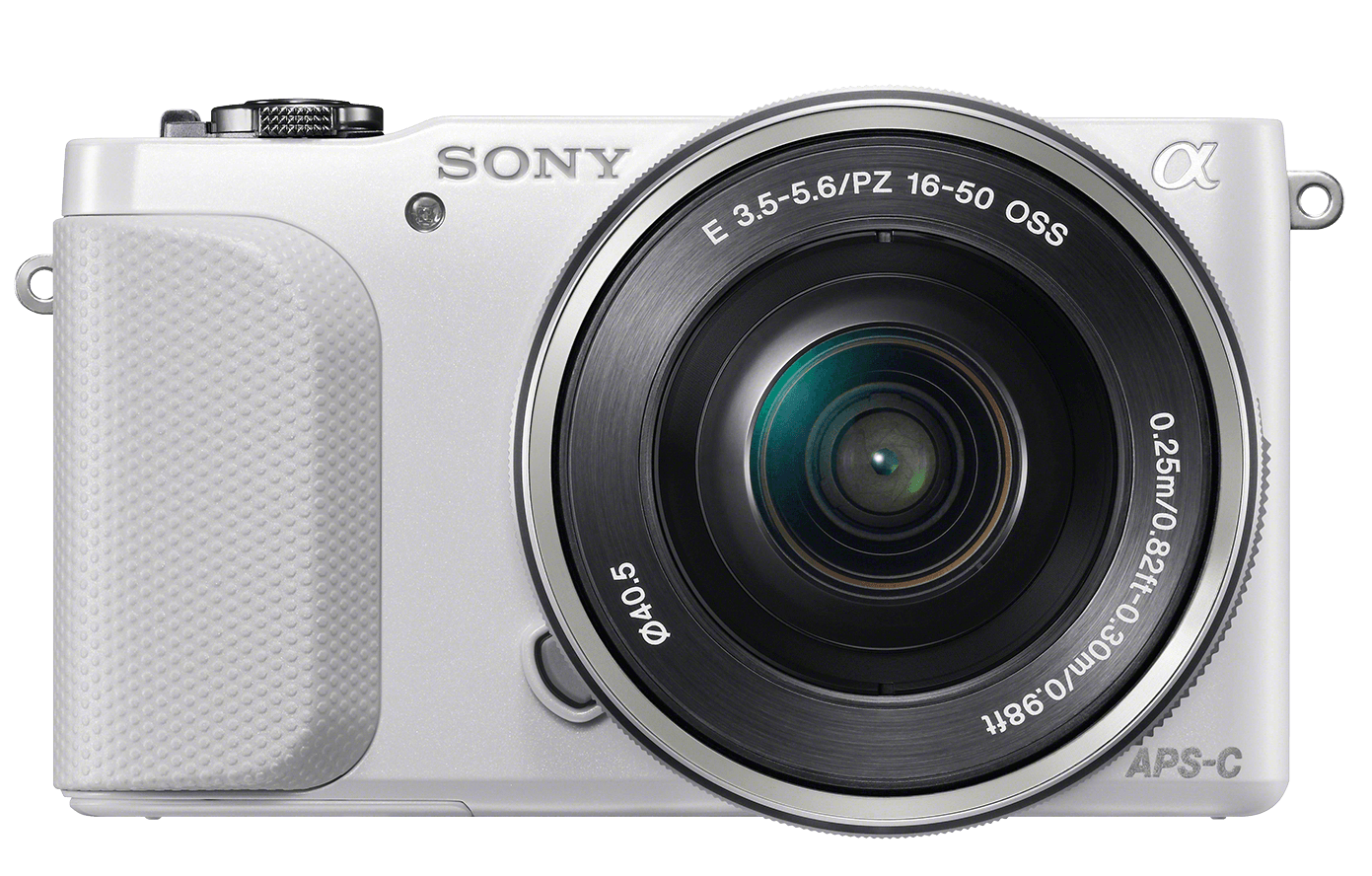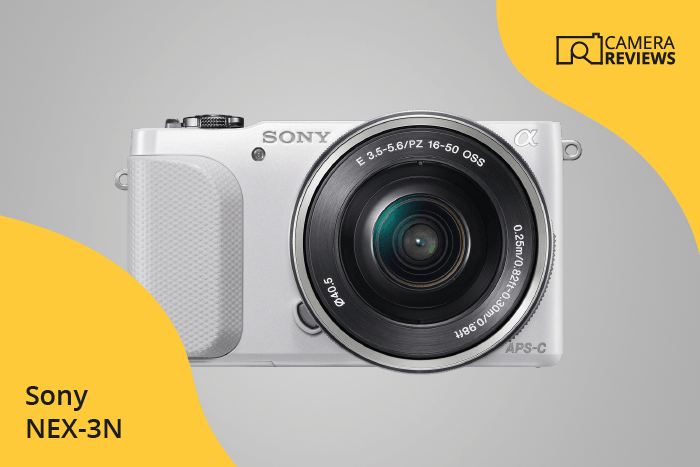Sony NEX-3N Specs and Scores

The Sony NEX-3N scores a 48/100 in our evaluation. Announced on February 20, 2013, and released the same year, this mirrorless camera originally retailed for $670. Measuring 110 x 62 x 35mm and weighing 269g or 0.59lbs, the NEX-3N is compact and lightweight. In today’s market, the camera’s specifications are modest, but it remains a decent option for beginners or casual photographers.
Sony NEX-3N Overview and Optics
The Sony NEX-3N receives an optics score of 55/100. This camera features a 16-megapixel CMOS sensor in the APS-C format, paired with a Bionz processor. The sensor has a DXOMARK score of 74 and is capable of shooting at a speed of 4 frames per second. The camera uses a Sony E lens mount and offers image stabilization, ensuring steady shots in various conditions. The 3:2 aspect ratio provides a balance between image quality and file size.
Compared to other cameras in today’s market, the 16-megapixel resolution is on the lower end, with many cameras offering 24 megapixels or higher. However, the Sony NEX-3N still produces quality images, suitable for casual photography and smaller prints. The shooting speed of 4 fps is also considered slow, with other cameras offering faster continuous shooting speeds. The image stabilization feature is a valuable addition, as it helps to minimize camera shake and improve image quality in low light situations.
The Sony NEX-3N’s optics may not be groundbreaking, but it provides decent image quality and features for its price range. The camera is an appropriate choice for casual photographers looking for an affordable option with essential features.
Sony NEX-3N Video Performance
The Sony NEX-3N scores 47/100 for video capabilities. The camera records Full HD videos with a maximum resolution of 1920 x 1080. Users can capture smooth motion with a maximum frame rate of 50fps. However, the NEX-3N lacks built-in time-lapse functionality.
In the current market, the NEX-3N’s video specifications are average. Many modern cameras offer higher resolutions, such as 4K, and additional features like time-lapse. Despite its limitations, the NEX-3N still delivers decent video quality for casual users.
The Sony NEX-3N is not the top choice for videographers seeking advanced features and higher resolutions. However, the camera is suitable for those who require basic video recording capabilities in a compact form.
Sony NEX-3N Features and Benefits
The Sony NEX-3N’s features score stands at 36/100. The camera has a 3-inch screen with a resolution of 460,000 dots. While it does not have a touchscreen, it does have a flip screen, which can be useful for different shooting angles. However, the lack of GPS, WiFi, and Bluetooth capabilities may be seen as drawbacks in today’s market, where connectivity and geotagging are increasingly important.
Comparing the NEX-3N’s features to current cameras, it falls short in several aspects. The screen resolution is lower than many modern cameras, which offer higher resolutions for clearer image previews. Additionally, the absence of touchscreen functionality makes navigating menus and settings less convenient. The lack of connectivity options, such as WiFi and Bluetooth, limits the camera’s ability to quickly transfer images and remotely control the camera.
Despite these shortcomings, the Sony NEX-3N is still a capable camera with a flip screen feature that is valuable for certain shooting situations. However, it is crucial to consider the camera’s limitations in connectivity and screen quality when deciding if it meets your requirements.
Sony NEX-3N Storage and Battery
The Sony NEX-3N storage and battery receives a score of 27/100. This camera has one memory card slot, compatible with SD, SDHC, SDXC, Memory Stick Pro Duo, and Pro-HG Duo cards. The battery life allows for 480 shots and uses an NP-FW50 battery type. However, the camera lacks USB charging capabilities.
In today’s market, the storage options are standard, but the battery life falls short compared to competitors. The absence of USB charging further limits the camera’s usability and convenience. Thus, the Sony NEX-3N’s storage and battery performance is not optimal for users seeking maximum efficiency and convenience.
Sony NEX-3N Alternatives
Do you want to know how the Sony NEX-3N compares to its competitors? Have a look at the most popular comparisons for this camera below:
- Sony NEX-3N vs NEX-5N
- Sony a6000 vs NEX-3N
- Sony a6400 vs NEX-3N
- Sony a7R IV vs NEX-3N
- Canon 1D C vs Sony NEX-3N
- Canon EOS 5D Mark IV vs Sony NEX-3N
Sony NEX-3N FAQ
Does the Sony NEX-3N Have Built-in Image Stabilization?
Yes, the Sony NEX-3N features built-in Optical SteadyShot image stabilization, which helps reduce camera shake and produce sharper images, especially in low light conditions.
Does the Sony NEX-3N Support 4K Video Recording?
No, the Sony NEX-3N does not support 4K video recording. Its maximum video resolution is Full HD 1080p at 60i or 24p frame rates.
What Size Sensor Does The Sony NEX-3N Have?
The Sony NEX-3N is equipped with an APS-C sized sensor, which is larger than typical compact camera sensors and provides better image quality and low-light performance.
Does the Sony NEX-3N Have a Dual Memory Card Slot?
No, the Sony NEX-3N has a single memory card slot that supports SD, SDHC, and SDXC cards for storage of photos and videos.
Does the Sony NEX-3N Have a Touch Screen?
No, the Sony NEX-3N does not have a touch screen. It features a 3-inch tilting LCD screen for live view and menu navigation, but it is not touch-sensitive.
Does the Sony NEX-3N Have Wi-Fi and Bluetooth?
Unfortunately, the Sony NEX-3N does not have built-in Wi-Fi or Bluetooth capabilities for wireless connectivity and sharing of images.
Does the Sony NEX-3N Have GPS?
No, the Sony NEX-3N does not have built-in GPS functionality for geotagging photos with location information.
Is the Sony NEX-3N Weather Sealed?
No, the Sony NEX-3N is not weather-sealed, so it is not recommended for use in harsh weather conditions or environments with dust and moisture.
Does the Sony NEX-3N Have a Built-in Flash?
Yes, the Sony NEX-3N features a built-in pop-up flash that can be used for additional light when shooting in low-light situations or for fill-flash purposes.

